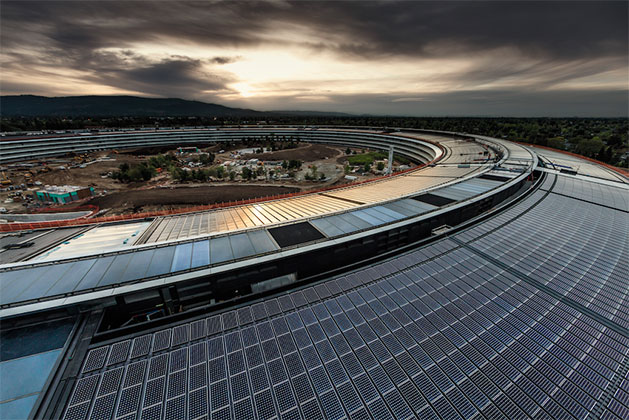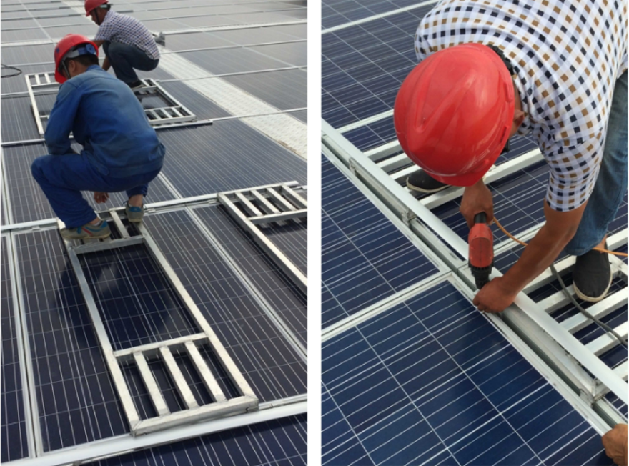According to the "Research Report on Energy Consumption and Carbon Emissions of Buildings in China" (2021), in 2019, the whole process total carbon emissions of buildings in China reached 4.997 billion tCO2, accounting for 50.6% of the total carbon emissions of the country. In the context of the "carbon peak and carbon neutrality" strategy, it is imperative to promote energy conservation in buildings.

More policy benefits for BIPV
POLICY
Building-integrated photovoltaics (BIPV) refers to the use of photovoltaic modules as the outer surface of a building structure, thereby realizing both power generation and structural construction functions at the same time. At present, BIPV technology is mainly used in photovoltaic roofs, photovoltaic curtain walls, photovoltaic shading, and sheds, all of which have many advantages in terms of efficiency, economic performance, and environmental protection.

In line with the development trend of clean, low-carbon, and sustainable buildings, BIPV offers suitable solution for low-carbon and energy-saving development, and thus will continue to enjoy national policy benefits.
In July, many provinces and cities issued their own BIPV policies:
On July 8, 2022, Beijing Municipality released the "Application Report on the Establishment and Demonstration of the Regulations on Green Building development (Draft for Comments)", which proposed to include two-star green buildings, 60% integration, photovoltaic integration, etc. as conditions for land auction and allocate special funds to support the development of green buildings;
On July 11, Jiangsu Province released its "Special Plan for Renewable Energy Development under the 14th Five-Year Plan" to encourage the construction and development of building-integrated and distributed photovoltaic power generation systems;
On July 14, Shanghai issued its "Implementation Plan for Carbon Peaking", which proposed that by 2025, all buildings of public institutions and industrial plants should reach a roof PV coverage of over 50%.
Addressing "pain points" with better AKCOME solutions
AKCOME
According to Rystad Energy, the installed capacity of rooftop solar power will increase by 61% from 2021 to 2025 across the world. In order to meet the needs of the fast-growing distributed PV market, AKCOME METALS has developed two series of innovative BIPV mounting products and corresponding system solutions for industrial and commercial use, and sheds.
As water leakage and infiltration have been a major "pain point" of roof photovoltaic systems, AKCOME BIPV mounting products adopt a “water chute” “structural design that can ensure 100% structural waterproofing, thus effectively solving the aforementioned pain point. Overall, our system features multi-layer waterproofing and drainage structures, including non-perforated water chute installation with a drainage cross-section of 3,860mm², ensuring comprehensive waterproofing design without dead zones.

Through continuous innovation and optimization, our BIPV R&D team has successively received a number of BIPV technology patents, and finally found a mature technical route that laid the core competitive advantage of the products. With the W water guide bearing the most stress, our BIPV mounting system can pass rigorous ballast tests, with each node also passing the pull test. Specifically, our mounts can withstand a pressure of 2,400Pa on both sides (front and back), and achieve great breakthroughs in tensile resistance, shear resistance, seismic resistance, and other performances, all of which contribute to a 360-degree full circle technical guarantee.
Designed in reference to "Code for Building Structural Loads", "Technical specification for steel structure of light-weight buildings with gabled frames" and other national standards and codes, our BIPV mounts can be effectively integrated with building functions such as lighting and ventilation and are highly compatible with various frame components.

Our BIPV mounting system has significant advantages in weather resistance, durability, aesthetics, economic performance, and other aspects. It is estimated that the investment cost of these products is 10%-20% lower than other similar products on the market, so they can bring higher and more consistent economic and environmental benefits.
AKCOME METALS provides a full cycle service from project initiation, system design, structural optimization, and installation to long-term maintenance. By implementing the "one team for one project" service system, AKCOME is dedicated to guaranteeing the return and security of your investment.





